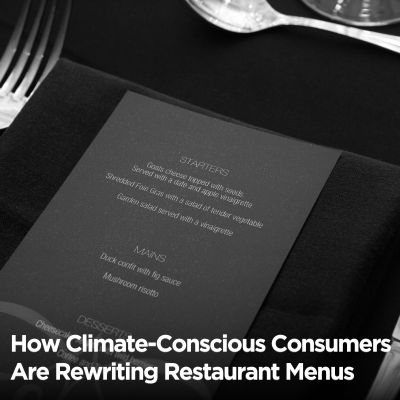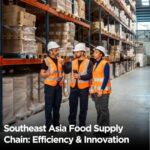Across Southeast Asia, an increasing number of diners are paying attention to the environmental impact of their meals.
Climate-conscious consumers want food that not only tastes good but also has a smaller carbon footprint. They are seeking low-impact dining options that minimize harm to the planet.
According to NielsenIQ, 73% of global consumers say they would change their habits to lower their environmental impact. This indicates that sustainability is becoming a crucial factor in what people eat and where they choose to dine.
Many restaurants have begun to modify their menus to include more sustainable options. They select ingredients that are better for the environment and share information about how they source their food. More customers now prefer dining at places that show care for the planet.
This article explains how climate-conscious consumers influence menus, ingredient sourcing, and how food businesses present their values to customers.
Who Are Climate-Conscious Consumers?
Climate-conscious consumers are diners who pay attention to the environmental impact of their food choices. This group primarily consists of younger generations, especially Millennials and Gen Z, who show a strong interest in sustainable eating habits.
A 2023 NielsenIQ study found that 69% of people now prioritize sustainability when purchasing products, a higher percentage than two years ago. Among Gen Z, over two-thirds say sustainability influences what they eat.
These consumers often choose plant-based menus and prefer vegan or vegetarian options when dining out.
According to a report on sustainable consumption in the Asia-Pacific region by Rakuten Insight, many people in Southeast Asia support eco-friendly food choices.
The report shows that 68% of consumers in Indonesia, 62% in Thailand, and 61% in both the Philippines and Vietnam favor sustainable food production.
Many people are reducing their meat consumption to lower their carbon footprint and support more environmentally friendly farming methods. Beyond food choices, they also expect restaurants to lower food waste and source ingredients responsibly.
These consumers are often willing to pay more for food and drinks from businesses that care about social and environmental issues.
For restaurants, this means being transparent about ingredient sourcing and offering more plant-based menus to meet the needs of climate-conscious consumers.
The Menu Makeover: What Sustainability Really Looks Like
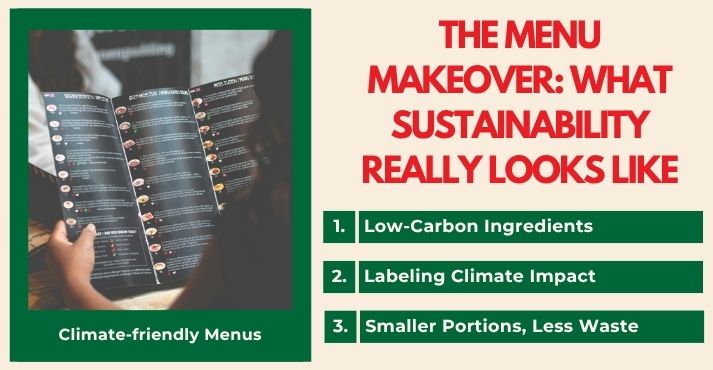
Restaurants today are re-evaluating their menus to cater to the needs of climate-conscious consumers. The focus is on reducing the environmental impact of dishes through careful ingredient selection, more transparent labeling, and efficient portioning.
Here’s what climate-friendly menus include:
1. Low-Carbon Ingredients
One of the main ways to reduce a menu’s carbon footprint is by swapping traditional high-impact ingredients like beef for lower-impact alternatives.
Mushrooms, jackfruit, and tempeh are gaining popularity as plant-based meat substitutes that offer a taste and texture comparable to traditional meat without the heavy environmental cost.
These ingredients require less water and land, and produce fewer greenhouse gases compared to beef and other red meats.
Locally sourced produce is another important element. Using fruits and vegetables grown nearby helps reduce transport emissions, keeping the food’s overall carbon footprint lower.
The Food and Agriculture Organization’s (FAO) report reveals that meat and dairy are the largest contributors to greenhouse gas emissions in the food sector, while most plant-based foods have a significantly lower impact.
Efforts like the World Resources Institute’s Cool Food Pledge encourage restaurants to commit to serving lower-carbon meals focused on ethical consumption and sustainable practices.
2. Labeling Climate Impact
Clear labeling helps diners make informed choices. Carbon labels or CO2e icons on menus show the estimated greenhouse gas emissions associated with each dish.
Brands like Oatly and restaurants like Just Salad have used these labels to promote climate-friendly dining and establish trust with environmentally conscious consumers.
In Southeast Asia, the adoption of carbon labeling remains limited, but interest is growing, particularly in Singapore and Thailand.
As more consumers seek transparency, restaurants are exploring ways to provide information on their climate impact, responding to the rise in green consumer behavior.
3. Smaller Portions, Less Waste
Reducing food waste is another significant part of sustainable menus. Offering smaller portion sizes or flexible options allows customers to choose how much they eat, which helps reduce leftovers.
Some restaurants, from fine dining to casual eateries, have introduced “zero-waste tasting menus” designed to use every ingredient fully, minimizing waste throughout the kitchen.
By balancing portion sizes and encouraging mindful eating, these practices support climate-conscious consumers while improving restaurant sustainability.
Case Studies: Restaurants Leading the Shift
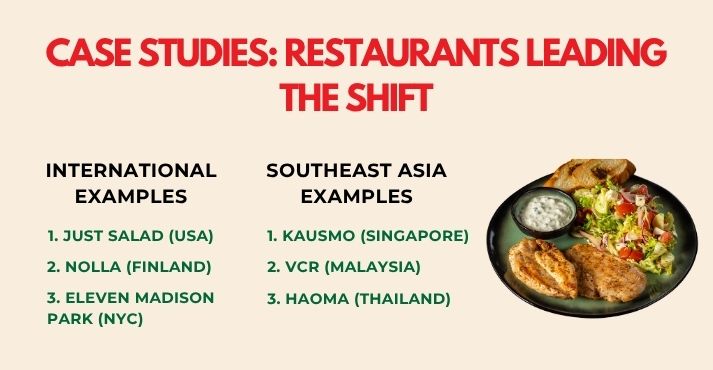
Around the world, some restaurants are taking tangible steps to demonstrate their commitment to sustainability. These places are changing how they source ingredients, reduce waste, and create menus that appeal to eco-conscious diners.
Here are some notable examples from both global pioneers and Southeast Asia innovators:
International Examples
1. Just Salad (USA)
Just Salad is a well-known chain in the United States that emphasizes sustainability through its use of reusable bowls and transparent sourcing practices.
They also use carbon labeling on some menu items, helping diners understand the environmental impact of their choices. Their focus on plant-based options and waste reduction appeals to eco-conscious diners.
2. Nolla (Finland)
Nolla is a zero-waste restaurant in Helsinki that uses upcycled food and local ingredients to minimize waste and environmental impact. Their entire menu is designed to reduce carbon emissions, showing how sustainable sourcing can be combined with creative cooking.
3. Eleven Madison Park (New York City)
This Michelin-starred restaurant has redesigned its menu to focus on plant-based dishes and sustainable sourcing.
By removing animal products and focusing on local, seasonal ingredients, Eleven Madison Park caters to diners concerned about their carbon footprint while maintaining high culinary standards.
Southeast Asia Examples
1. Kausmo (Singapore)
Kausmo is a Singapore-based café that highlights upcycled food by turning ingredients that might otherwise be wasted into delicious meals. This practice promotes environmental responsibility and appeals to diners seeking ethical consumption options.
2. VCR (Malaysia)
VCR, a popular café in Kuala Lumpur, runs a low-impact coffee program by sourcing beans from sustainable farms and using environmentally friendly brewing methods.
Their approach combines high-quality coffee with an awareness of its environmental impact, attracting eco-conscious diners.
3. Haoma (Thailand)
Haoma in Bangkok is known for its farm-to-table approach, sourcing ingredients directly from local farms that use sustainable practices.
This ensures the use of fresh, seasonal produce while supporting farmers who prioritize sustainability, meeting the expectations of diners who care about the origin of their food.
Challenges Behind the Green Curtain
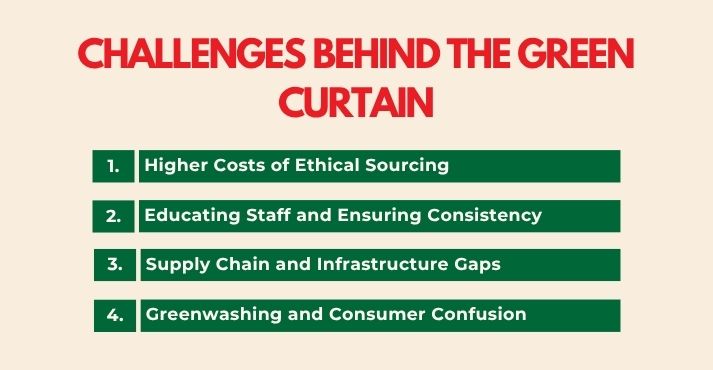
Building truly sustainable menus involves more than changing a few ingredients. Many restaurants face behind-the-scenes barriers that make implementing and maintaining eco-friendly menus challenging.
From sourcing to education and supply logistics, the journey toward sustainability is filled with practical hurdles.
1. Higher Costs of Ethical Sourcing
Sourcing local, organic, or sustainably grown ingredients usually incurs higher costs. Many eco-friendly menus rely on such items, but smaller restaurants with tight margins may find them unaffordable.
For example, sustainably raised meat or fair-trade produce typically costs more due to the additional costs of certifications, labor practices, or lower yields.
In Southeast Asia, where people are more price-conscious, the cost challenge can be even tougher. Balancing cost with values is a daily struggle for many food operators.
2. Educating Staff and Ensuring Consistency
Making a menu more sustainable also means staff need to understand and support the changes. From kitchen teams to front-of-house servers, employees need to grasp the purpose and practices behind the ingredients and menu changes.
Without proper training, sustainability efforts can be misinterpreted or even miscommunicated to customers.
For example, food carbon labeling can only be effective if staff are equipped to explain what the numbers mean and why they matter to environmentally aware diners.
3. Supply Chain and Infrastructure Gaps
In parts of Southeast Asia, limited access to reliable suppliers who prioritize sustainability is a major hurdle. Many countries still rely on traditional supply chains that are designed for scale, rather than for traceability or ethical sourcing.
This makes it difficult for restaurants to trace ingredients back to the farm or ensure their suppliers meet green standards.
A sustainable food supply chain requires cooperation across farmers, distributors, and certification bodies, but that infrastructure is still emerging in much of the region.
4. Greenwashing and Consumer Confusion
One of the biggest threats to progress is greenwashing — marketing products or menus as “sustainable” without evidence or action to back it up. Since there are no clear guidelines, some businesses exaggerate their eco-friendliness.
This confuses diners and makes it harder to trust restaurants that are genuinely trying. Being honest, using clear terms, and showing actual actions help build trust and avoid misleading claims.
How F&B Professionals Can Respond Strategically
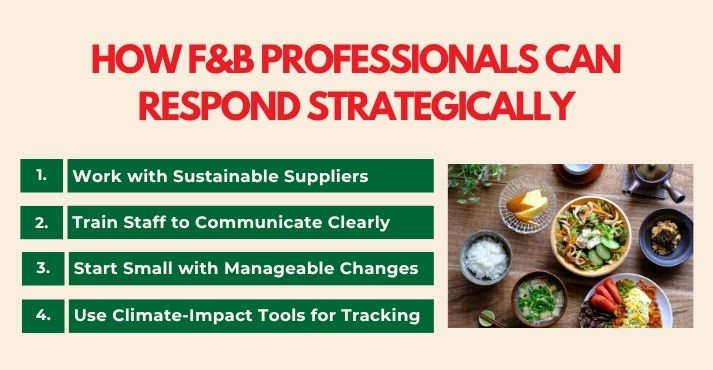
As more diners become aware of the impact of their food choices, food and beverage professionals are finding ways to meet these expectations.
Whether you run a restaurant, manage a hotel, or work in the food supply chain, the focus is on making smart, meaningful changes that support long-term sustainability.
1. Work with Sustainable Suppliers
Selecting suppliers with responsible practices helps mitigate environmental impact throughout the food supply chain. This can include sourcing from farms that follow regenerative agriculture or producers that reduce packaging and food waste.
In Southeast Asia, companies like SourceSage help businesses find sustainable sourcing options, while ReClimate supports tracking and reducing climate impact. Together, they support the development of a circular food economy.
In Singapore, Edible Garden City collaborates with restaurants to cultivate fresh herbs and vegetables on-site, reducing transportation emissions and promoting local food systems.
2. Train Staff to Communicate Clearly
Frontline staff often get questions from eco-conscious diners. When employees understand how ingredients are sourced or why a menu offers more climate-friendly options, they can explain these concepts with clarity and honesty. This helps build trust and encourages repeat visits.
3. Start Small with Manageable Changes
Restaurants don’t need to redesign the entire menu at once. Many start by testing a few plant-based dishes, offering smaller meat portions, or hosting a weekly day focused on alternative proteins.
These small shifts help introduce sustainable options without overwhelming staff or diners.
4. Use Climate-Impact Tools for Tracking
Tools like Klimato and CarbonCloud enable restaurants to measure the environmental impact of their dishes by calculating the carbon emissions associated with them.
This makes it easier to share facts with diners and adjust menus based on data. It also supports better decision-making across sourcing and operations.
By selecting better suppliers, preparing their teams, starting small, and using climate tools, F&B businesses can meet the needs of both their diners and the environment.
SEA Perspective: Government & Industry Support
Southeast Asia is increasingly recognizing the importance of sustainable food systems, with governments and industries actively implementing policies and initiatives to promote food security, reduce food waste, and encourage sustainable practices.
Singapore has set an ambitious target, known as the “30 by 30” goal, aiming to produce 30% of its nutritional needs locally by 2030. This effort reduces reliance on imports and enhances food resilience by promoting urban farming and supporting local producers.
Thailand is addressing food waste through its Food Waste Management Roadmap (2023–2030) and National Food Waste Management Action Plan (2023–2027), targeting a reduction of food waste to less than 28% of municipal solid waste by 2027.
These strategies include waste segregation, improved disposal systems, and raising public awareness.
In Malaysia, food waste is a significant concern within domestic waste streams. The government, through the Solid Waste Management and Public Cleansing Corporation (SWCorp), promotes effective food waste management by encouraging waste separation and composting initiatives.
At the regional level, ASEAN promotes collaboration on food sustainability through initiatives such as the ASEAN Food Security Reserve and the ASEAN-CGIAR Innovate for Food and Nutrition Security Regional Program, which focuses on sustainable agriculture and resilient food systems to secure the region’s future.
These combined efforts demonstrate the increasing commitment in Southeast Asia to enhancing food sustainability through government policies and industry collaboration.
Conclusion
Climate-conscious eating isn’t just a trend, but a change that’s here to stay. More people are now paying attention to how their food affects the environment, and they expect restaurants to be transparent about where their ingredients come from and how they’re produced.
Restaurants that offer clear information and include options such as plant-based meat and low-carbon dishes will better connect with these customers. Being honest and taking real steps toward sustainability helps build trust and loyalty.
By meeting these expectations, restaurants can grow their business while helping create a more responsible food system for the future.

